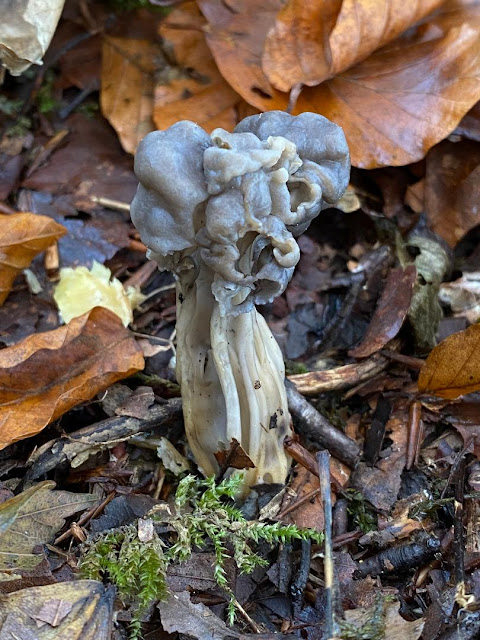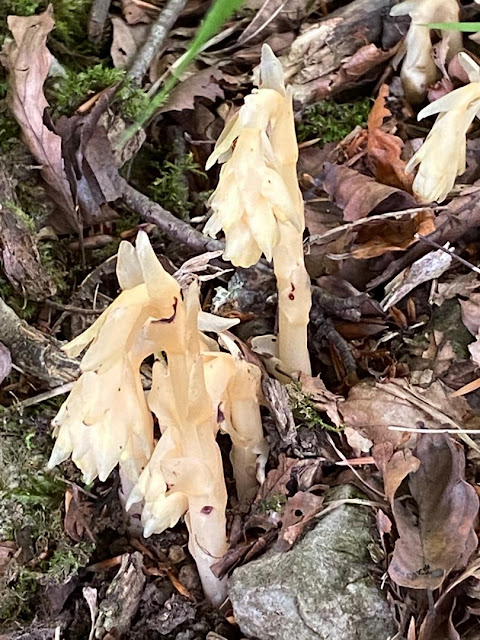Elfin Saddle fungi (Helvella lacunosa)
22nd November 2021 – Dalton Crags.
A strange looking mushroom I found amongst the leaf litter on the floor beneath a Beech tree in Woodland making up part of Dalton Crags, Burton In Kendal, Cumbria (or old Westmorland). The mushroom was about 6cm tall and of a slate grey colour and so unusual appearance with humps and bumps, yet somehow it had something appealing about it that made you want to check it out more. According to the references it is not that rare, but a first for me. First discovered in 1783 by a Swedish naturalist Adam Afzelius who christened it “Helvella lacunosa” . Helvella means “aromic herb” and lacunosa means “having holes”.
"At first to me, it looked so strange in fact ugly - yet search deeper (look more than once) and you really do see a new found beauty". - The old adage "Never judge a book by its cover"
.JPG)



























